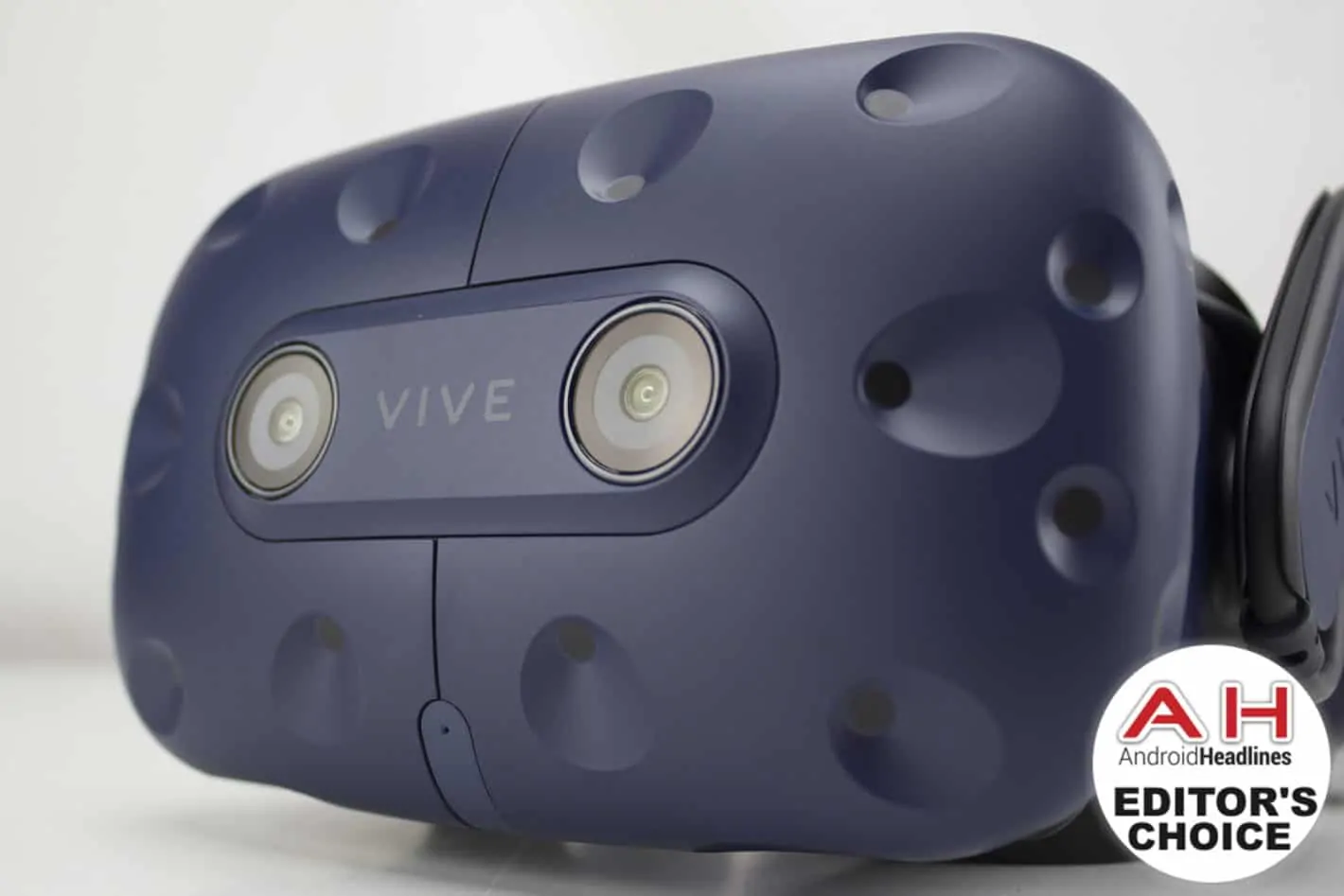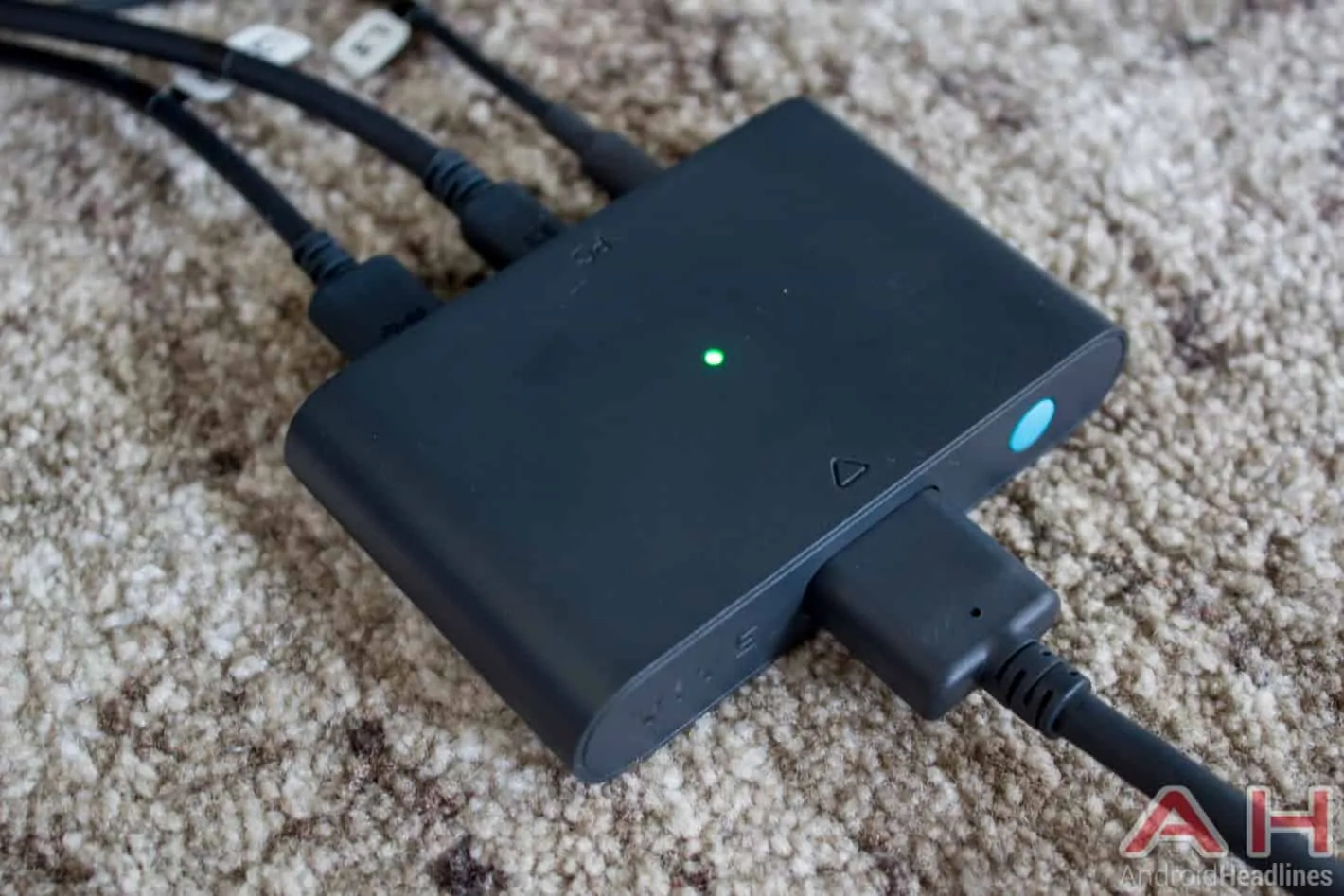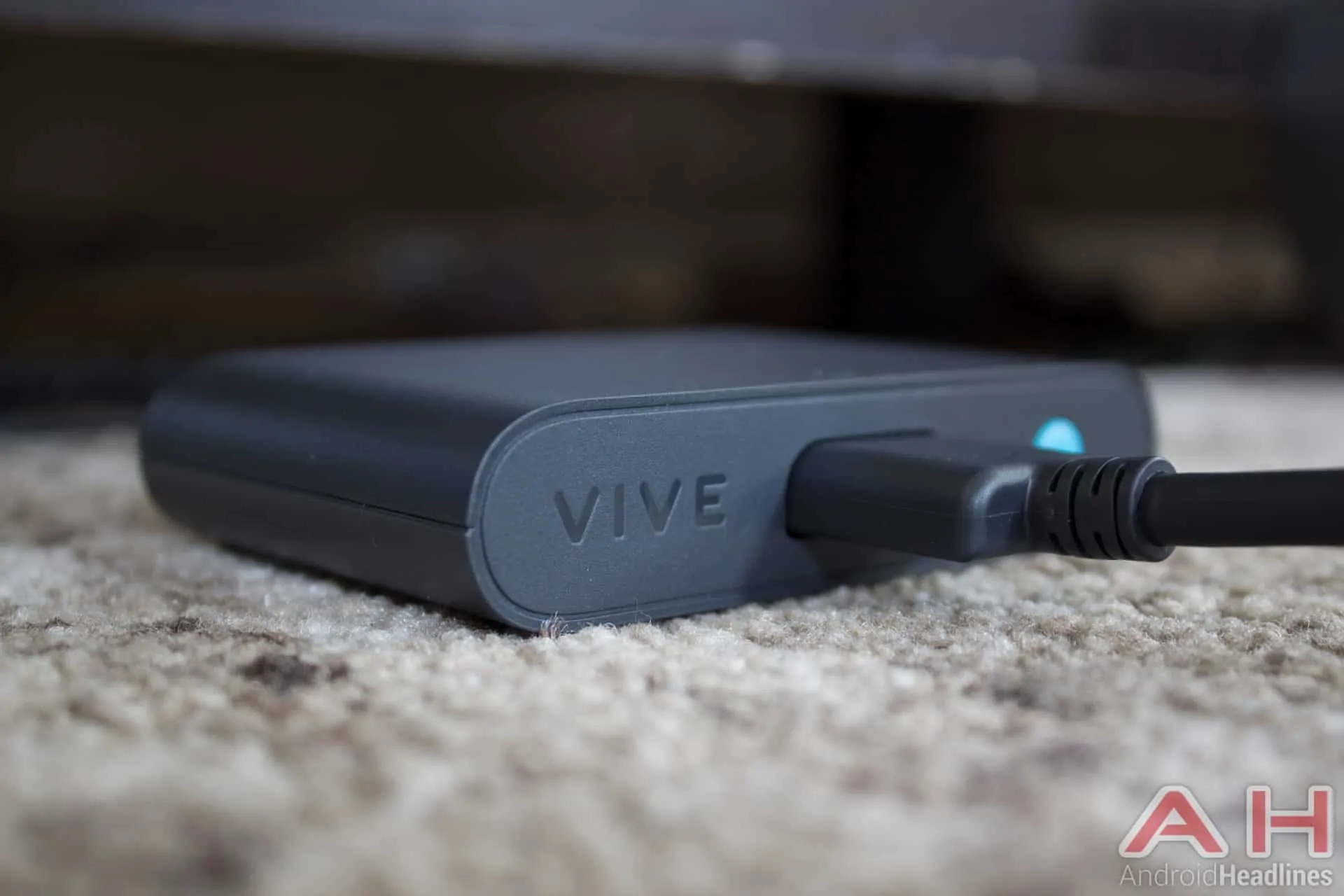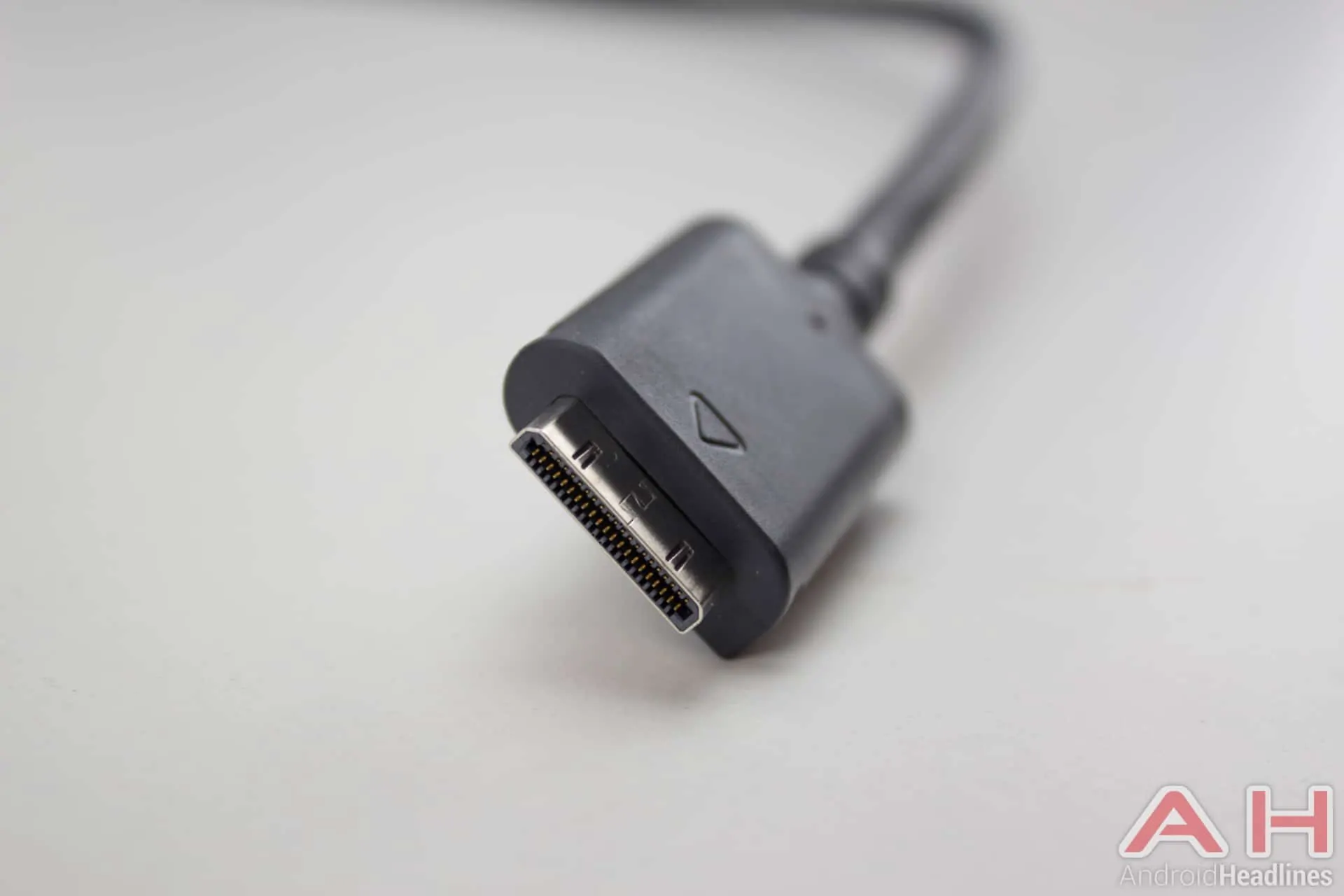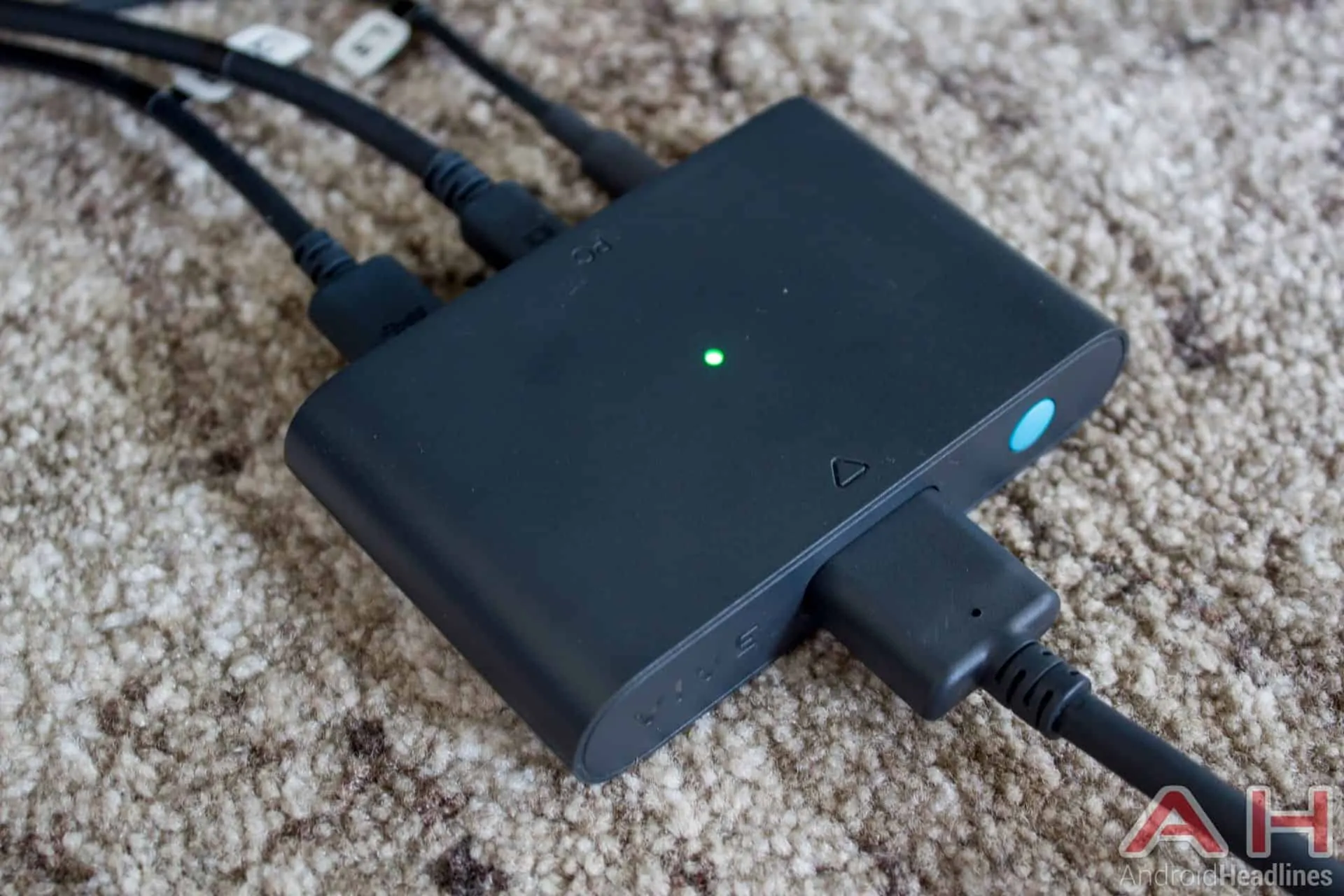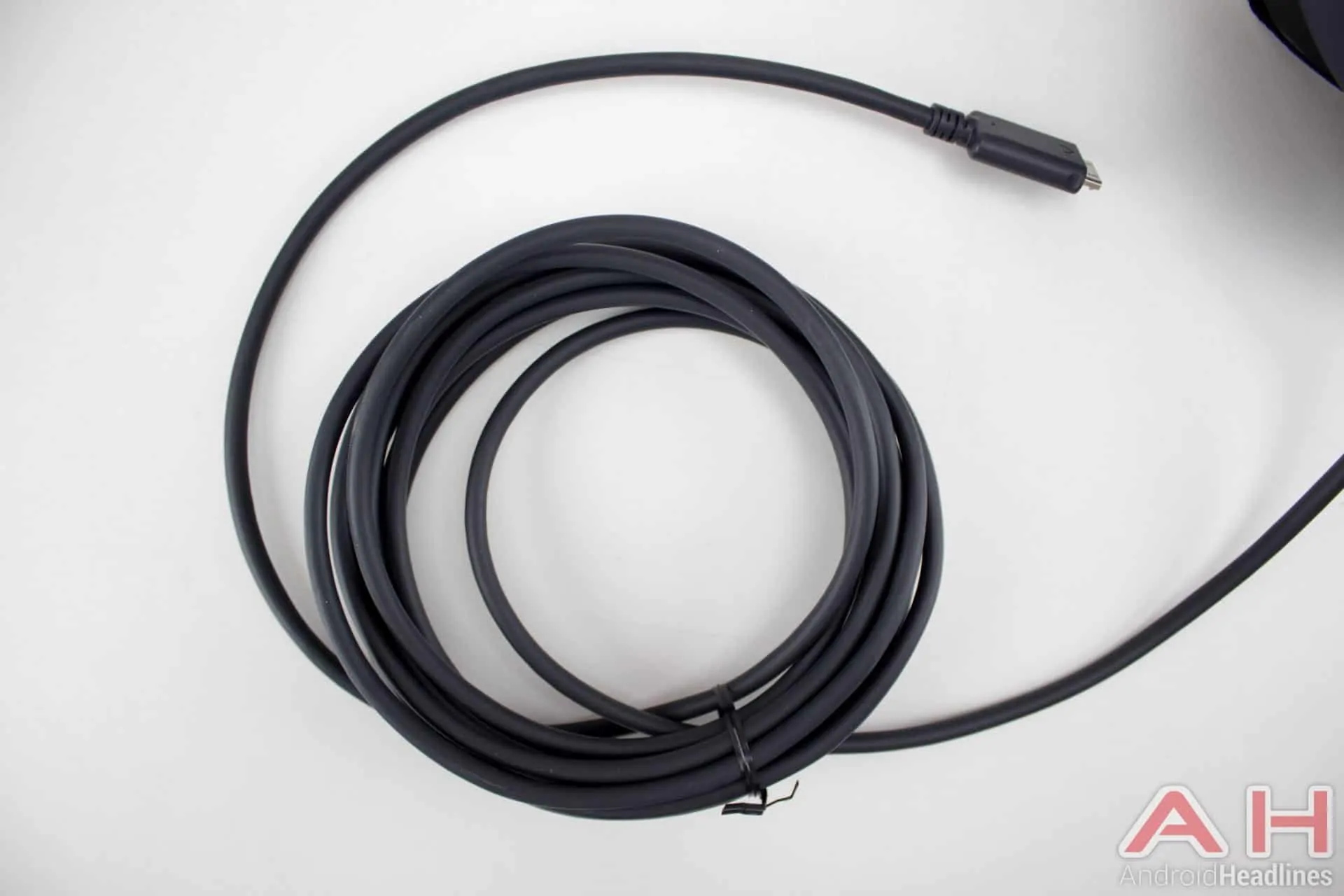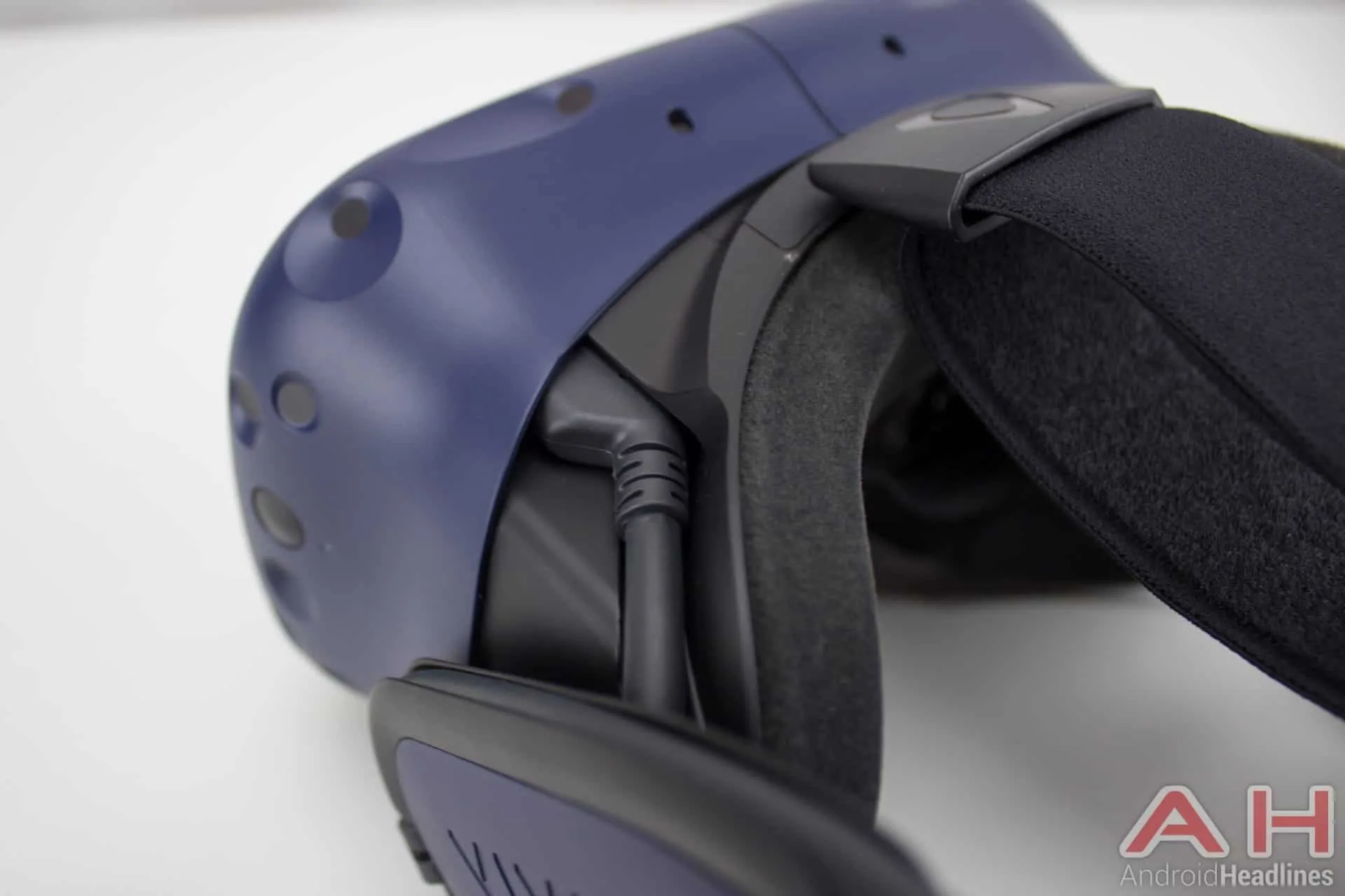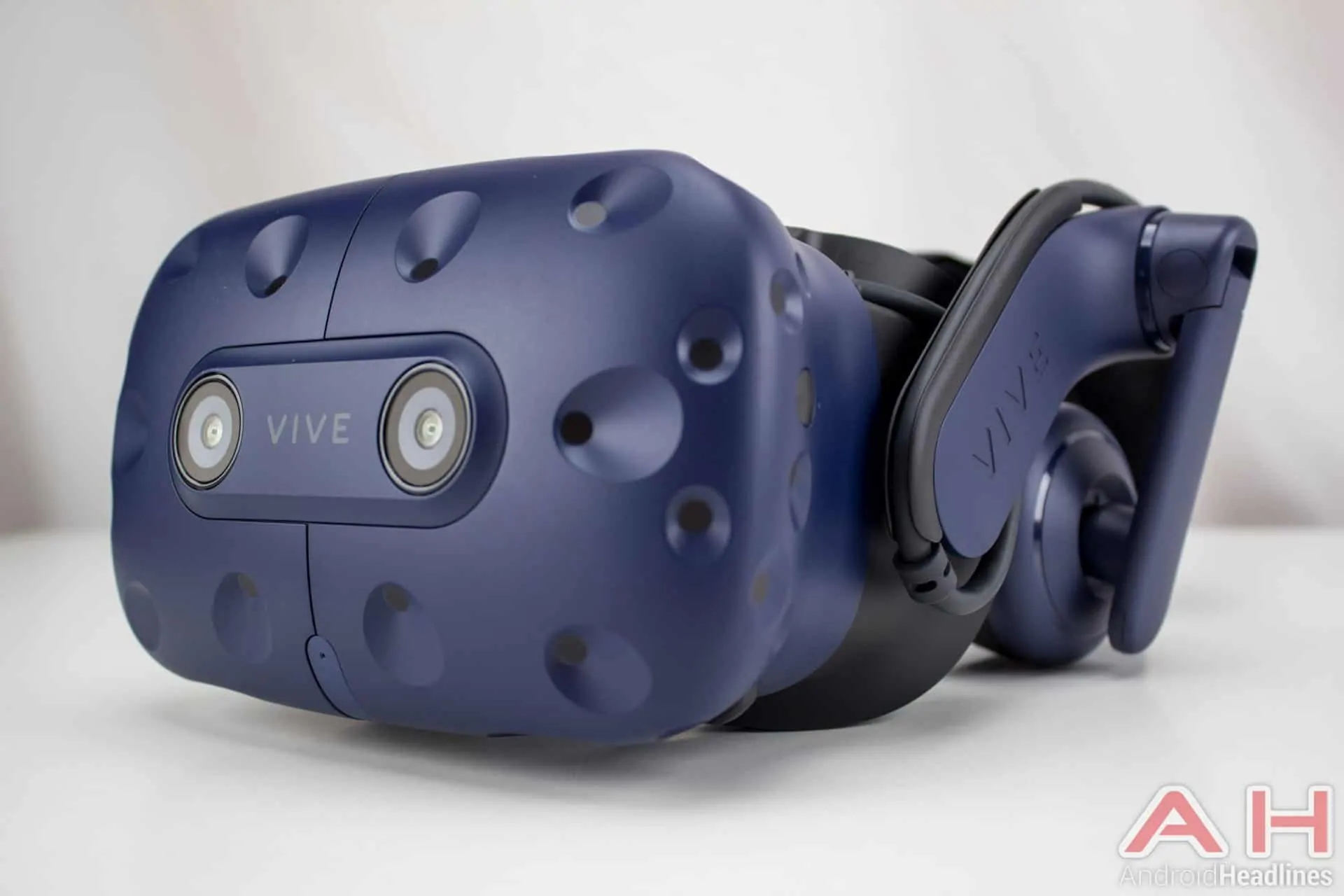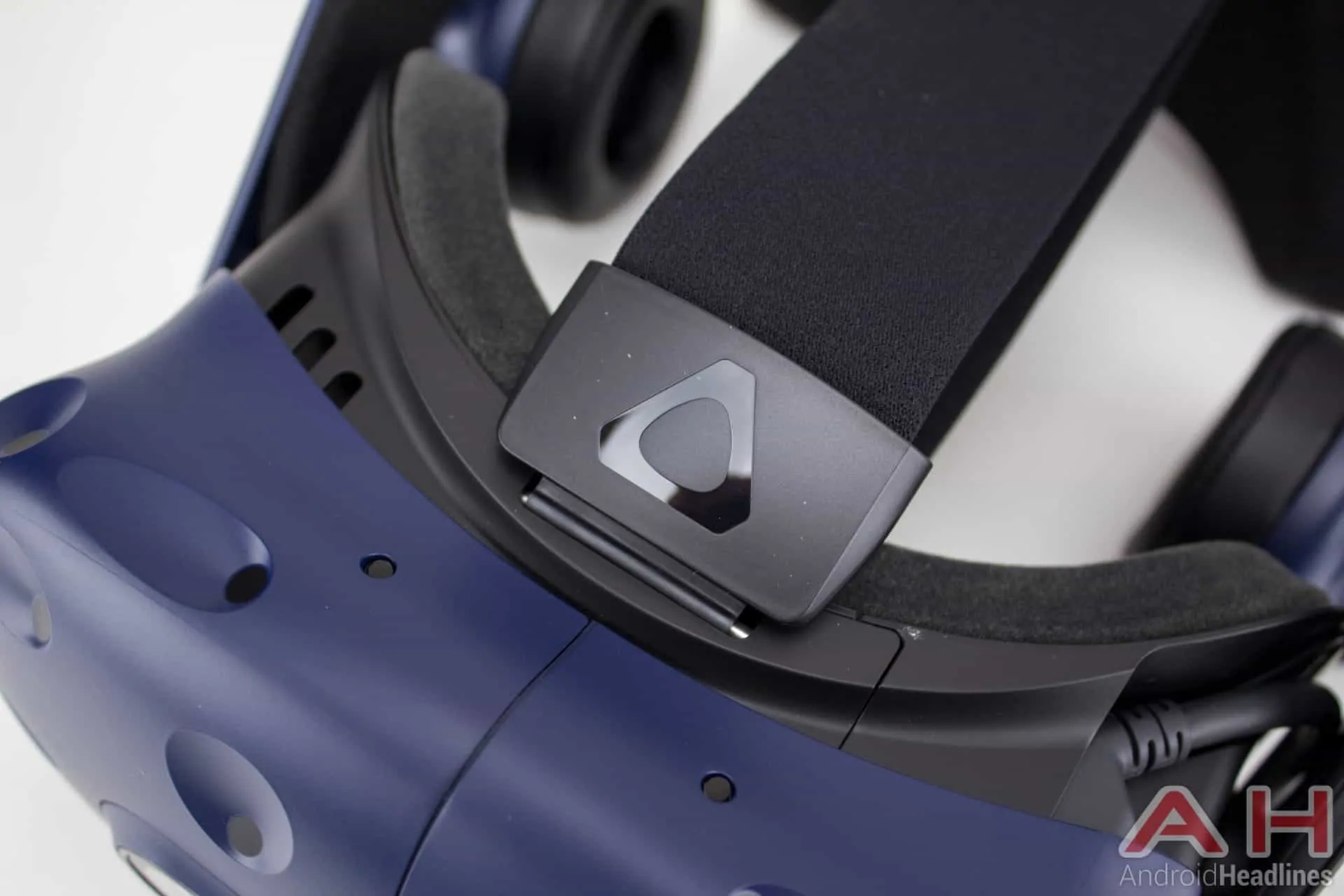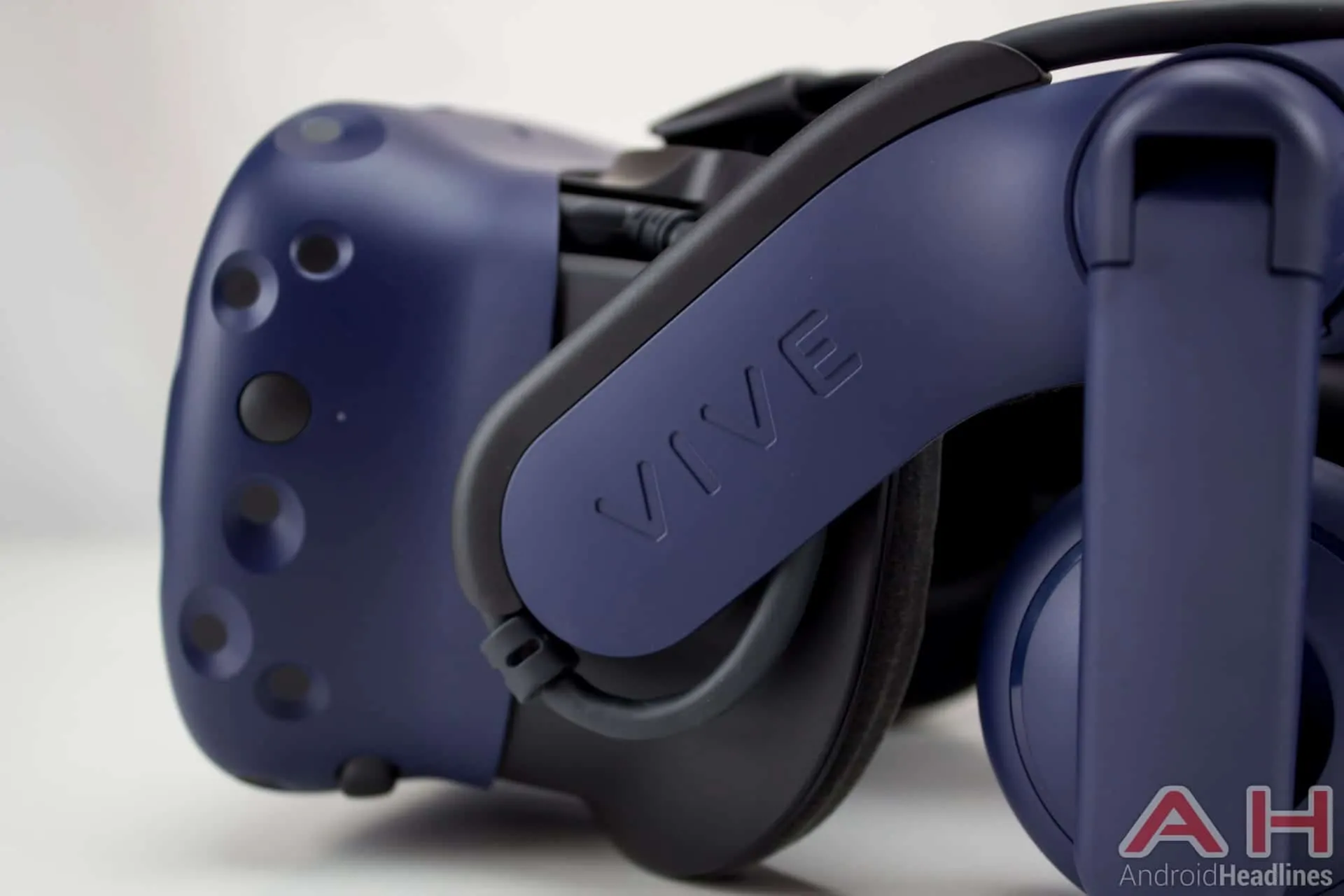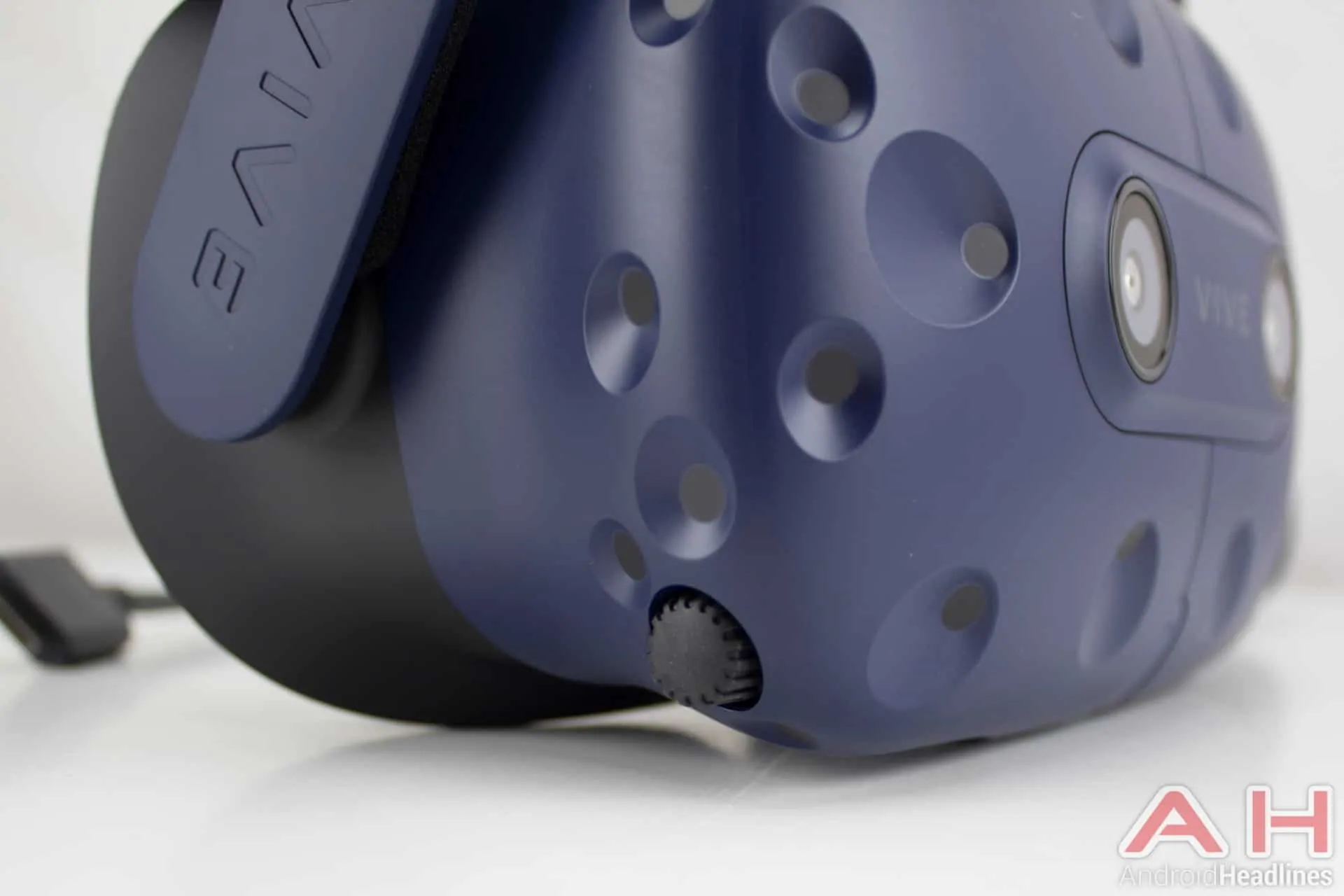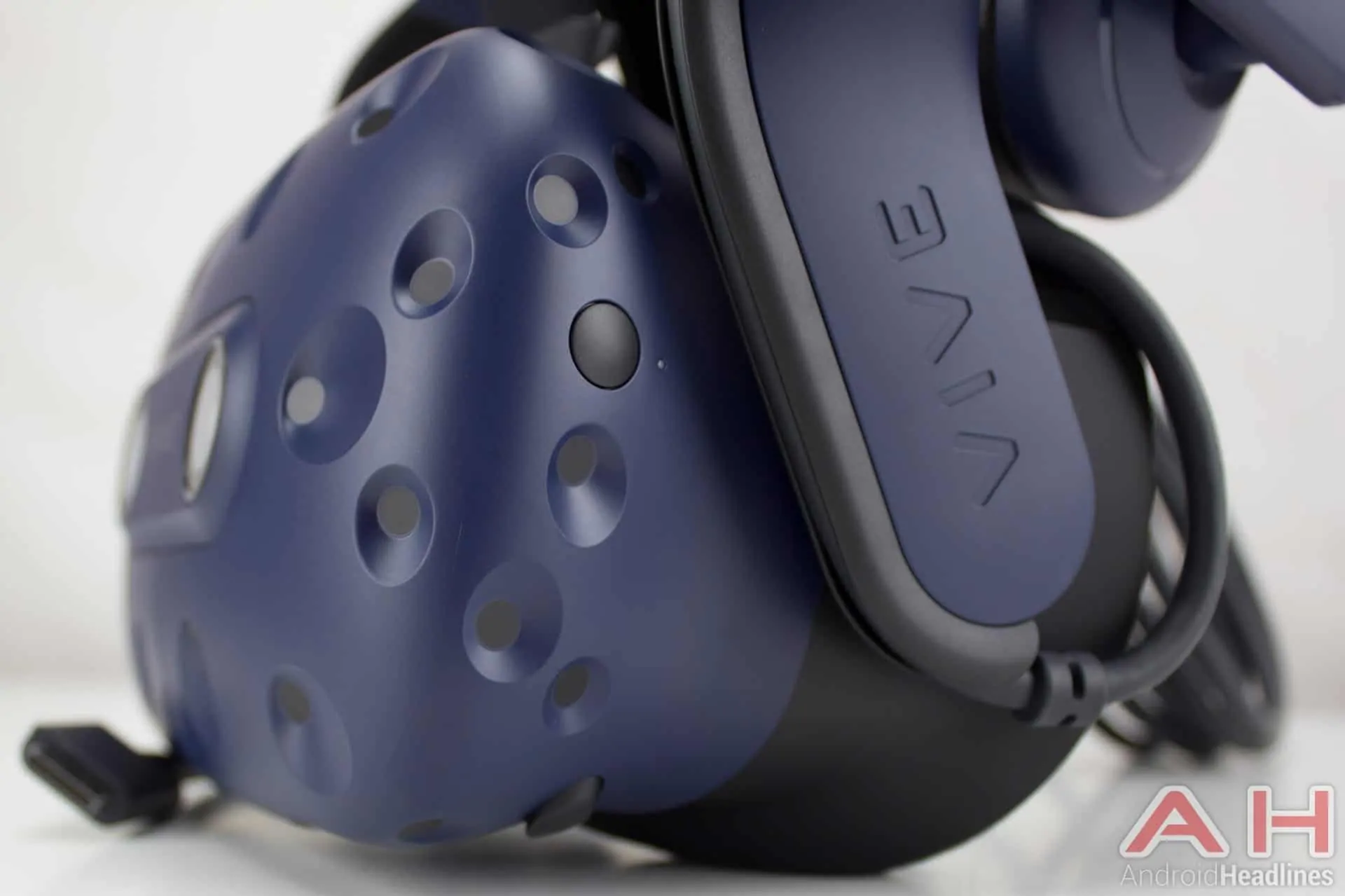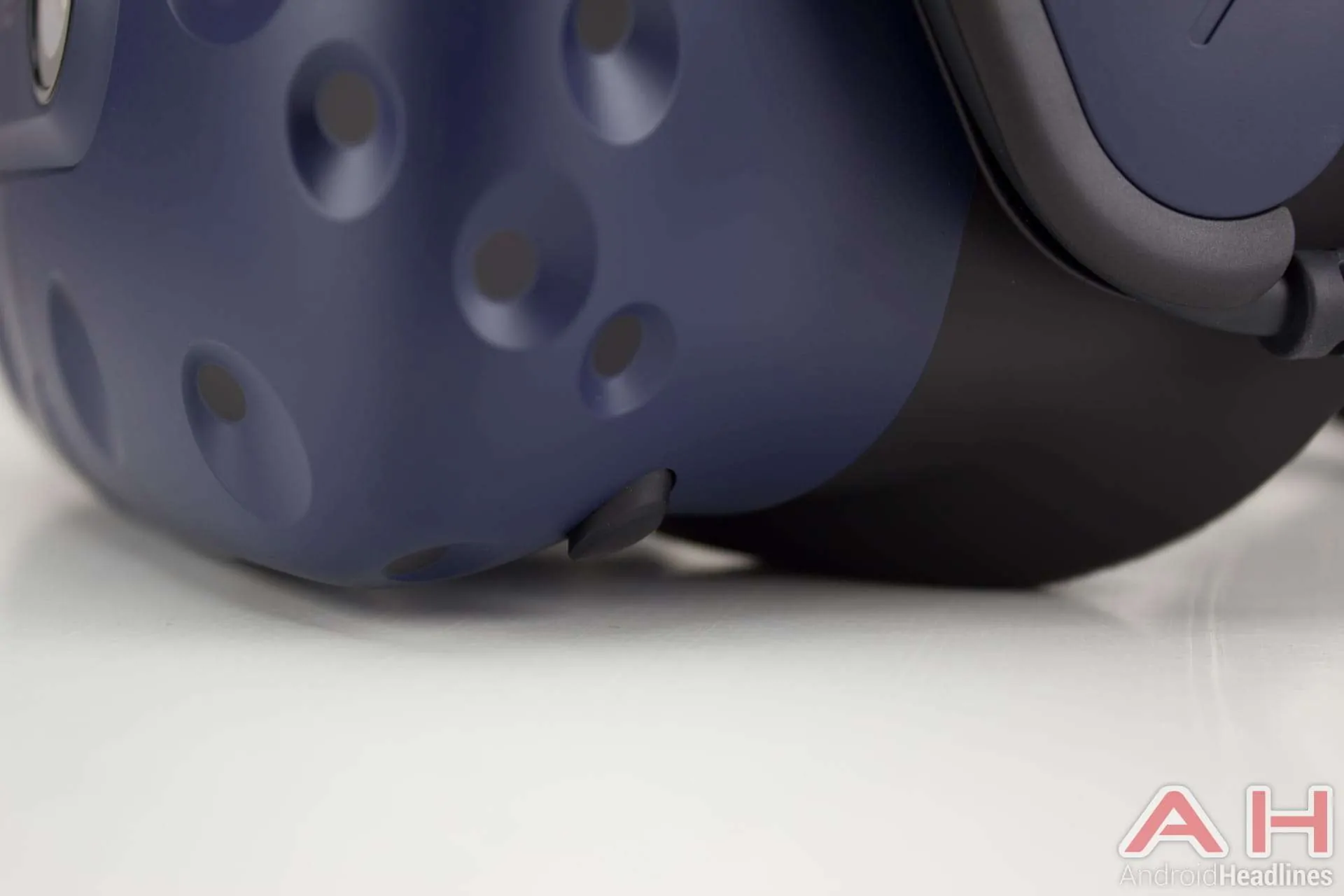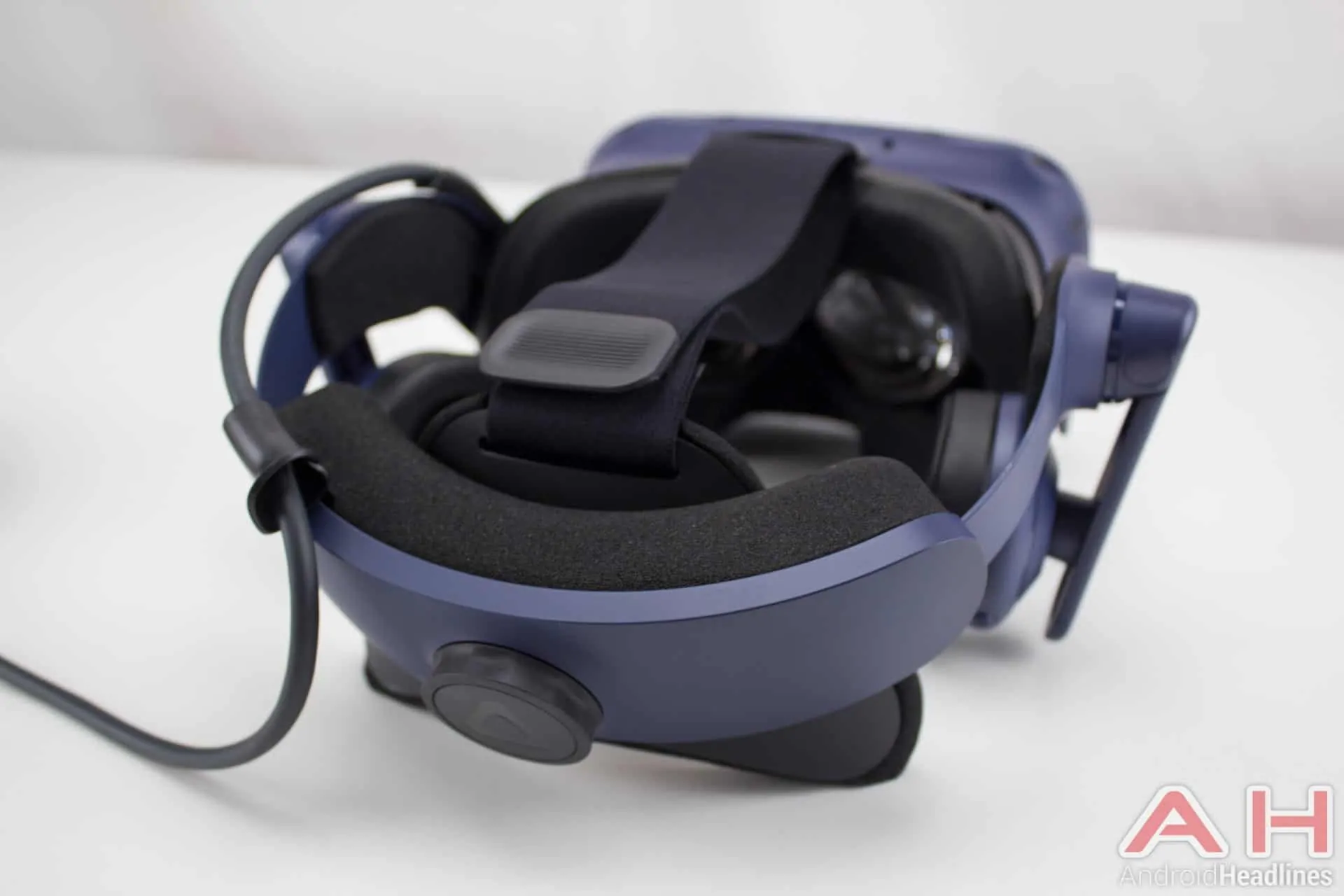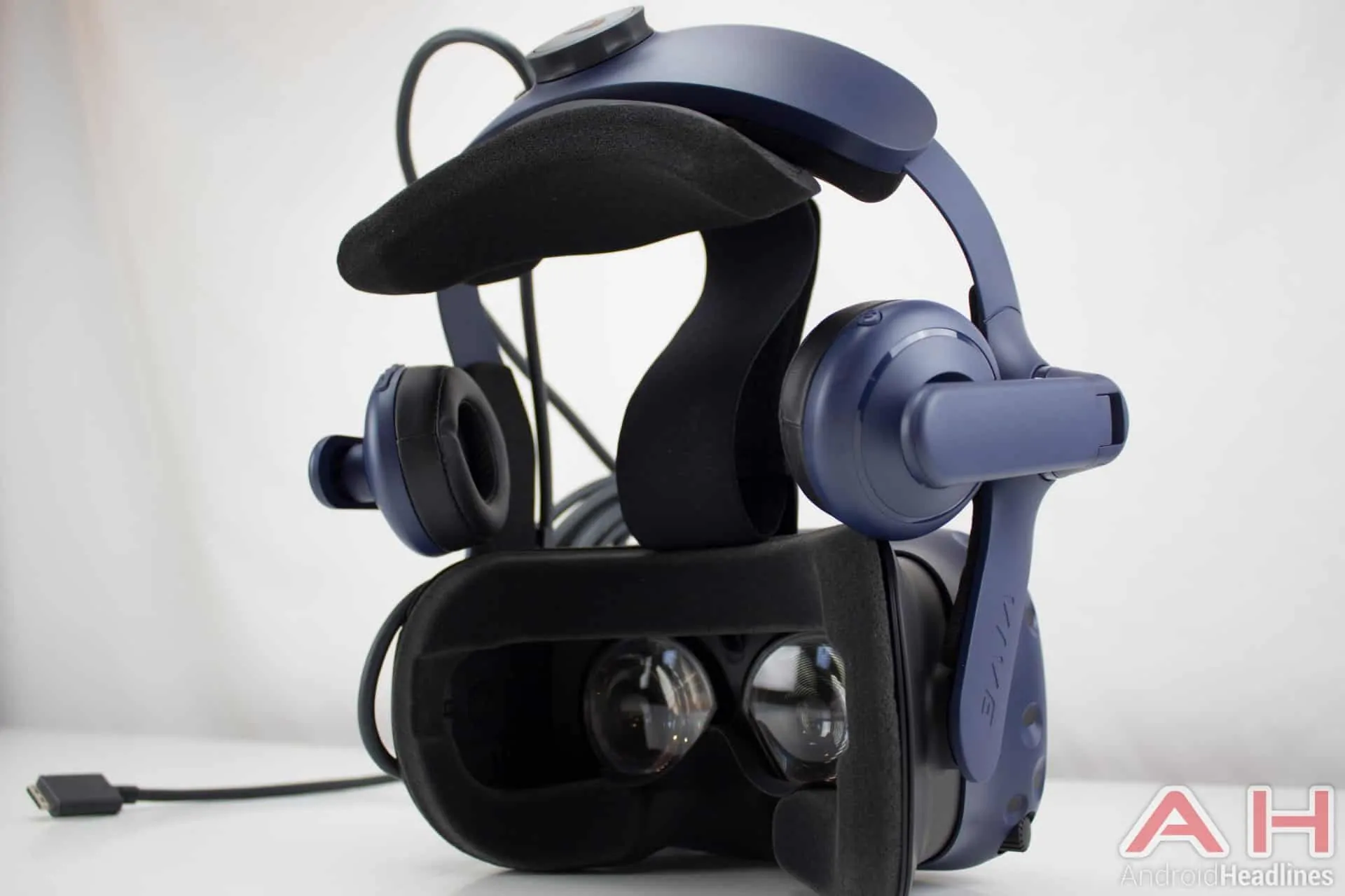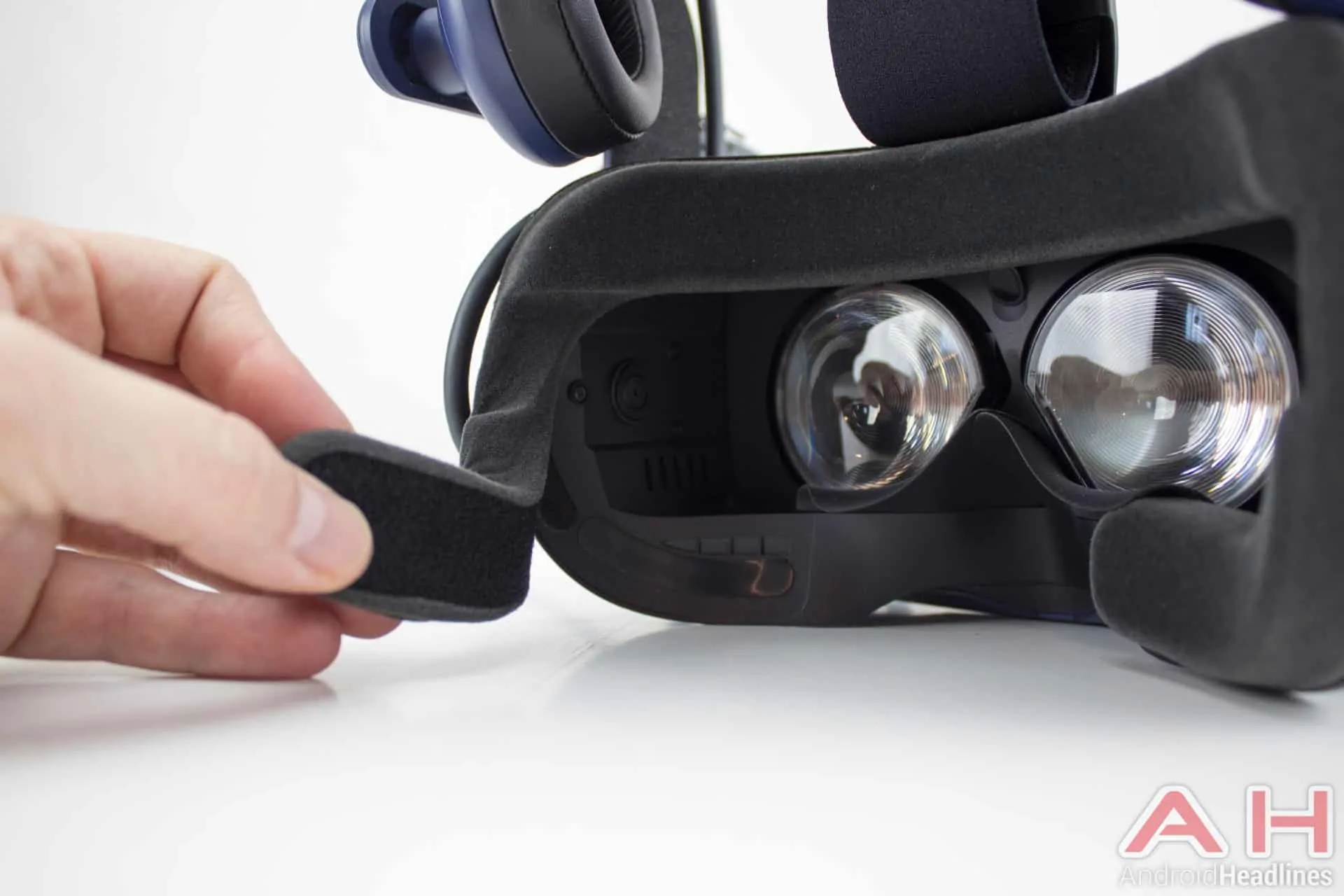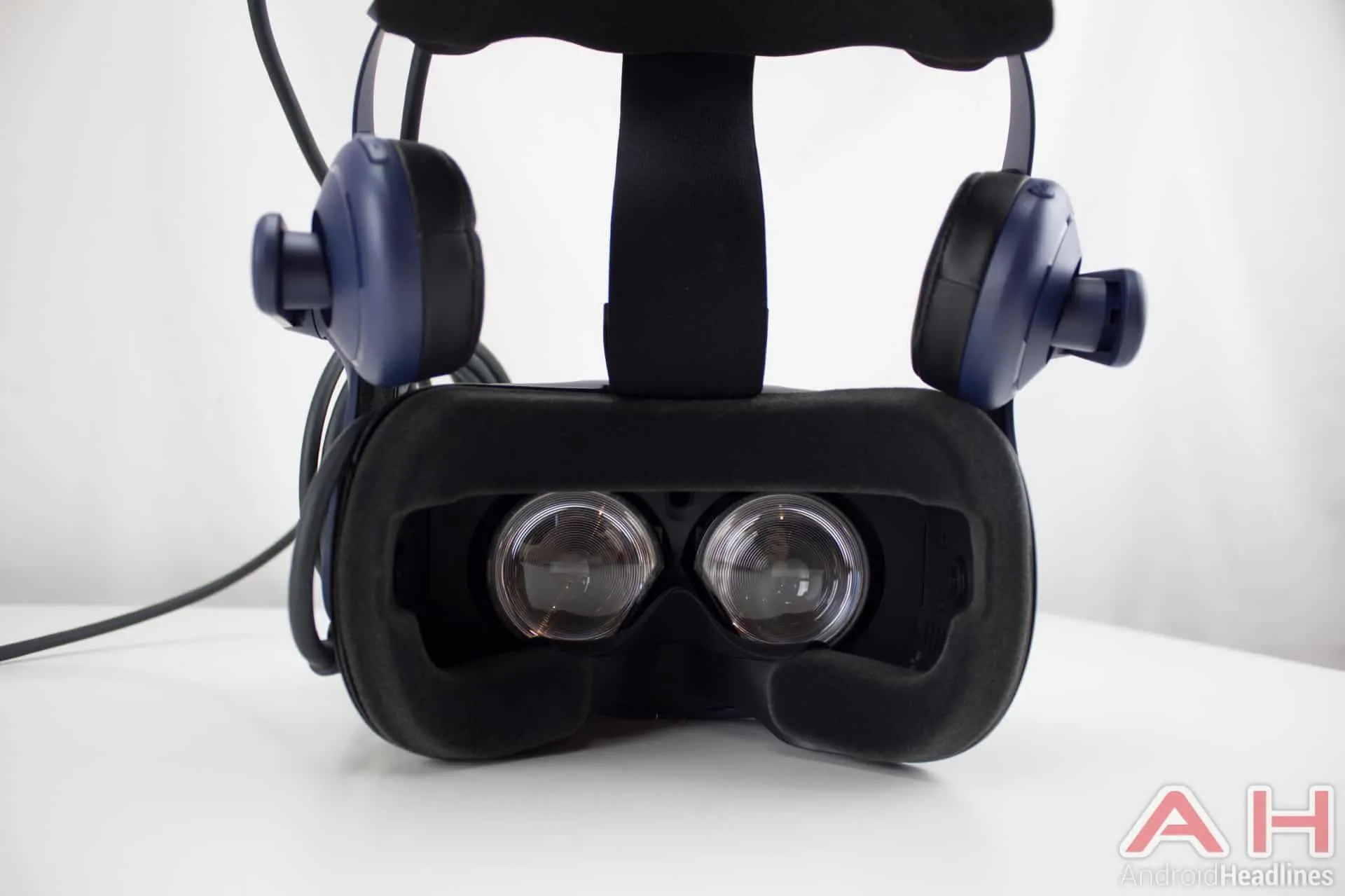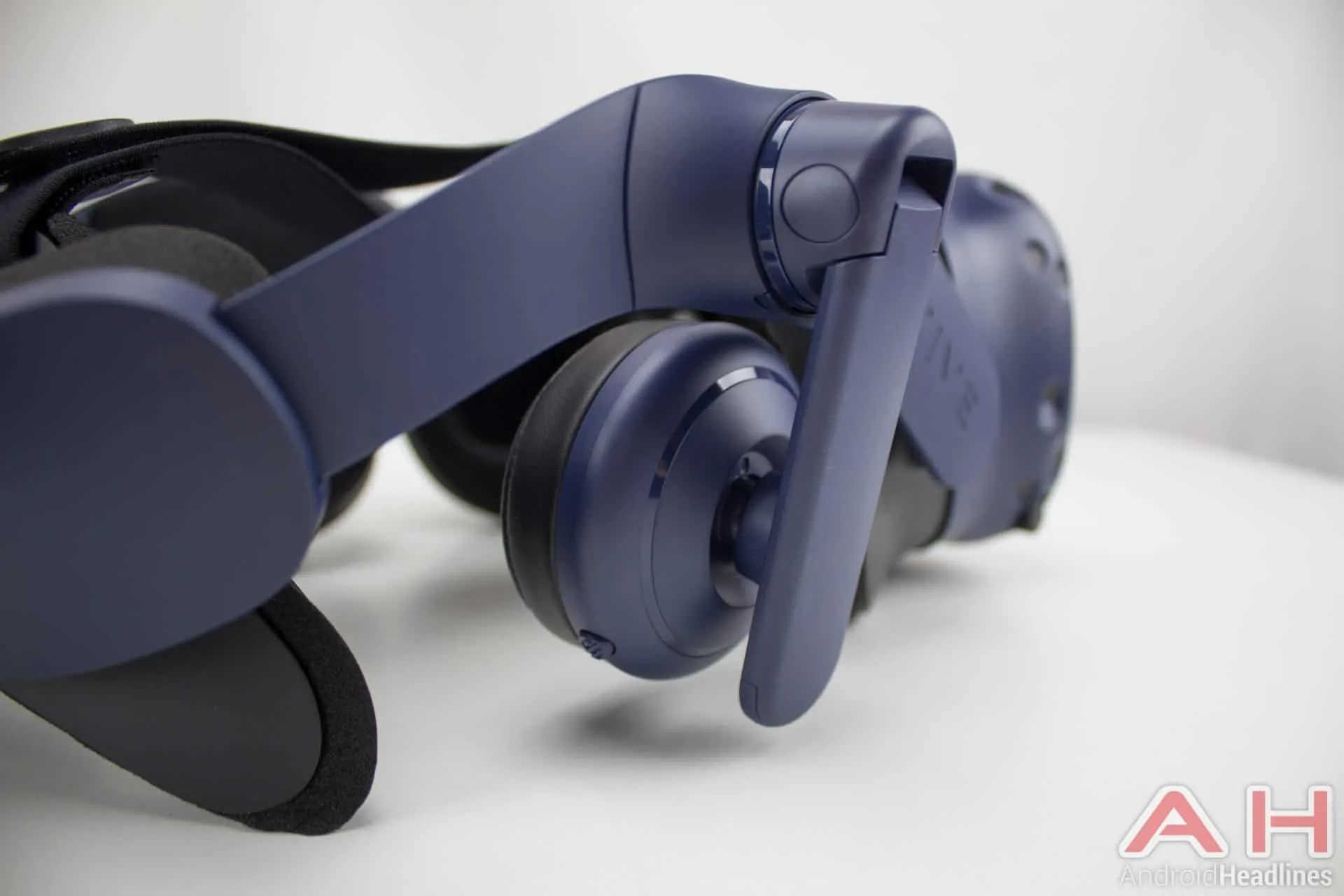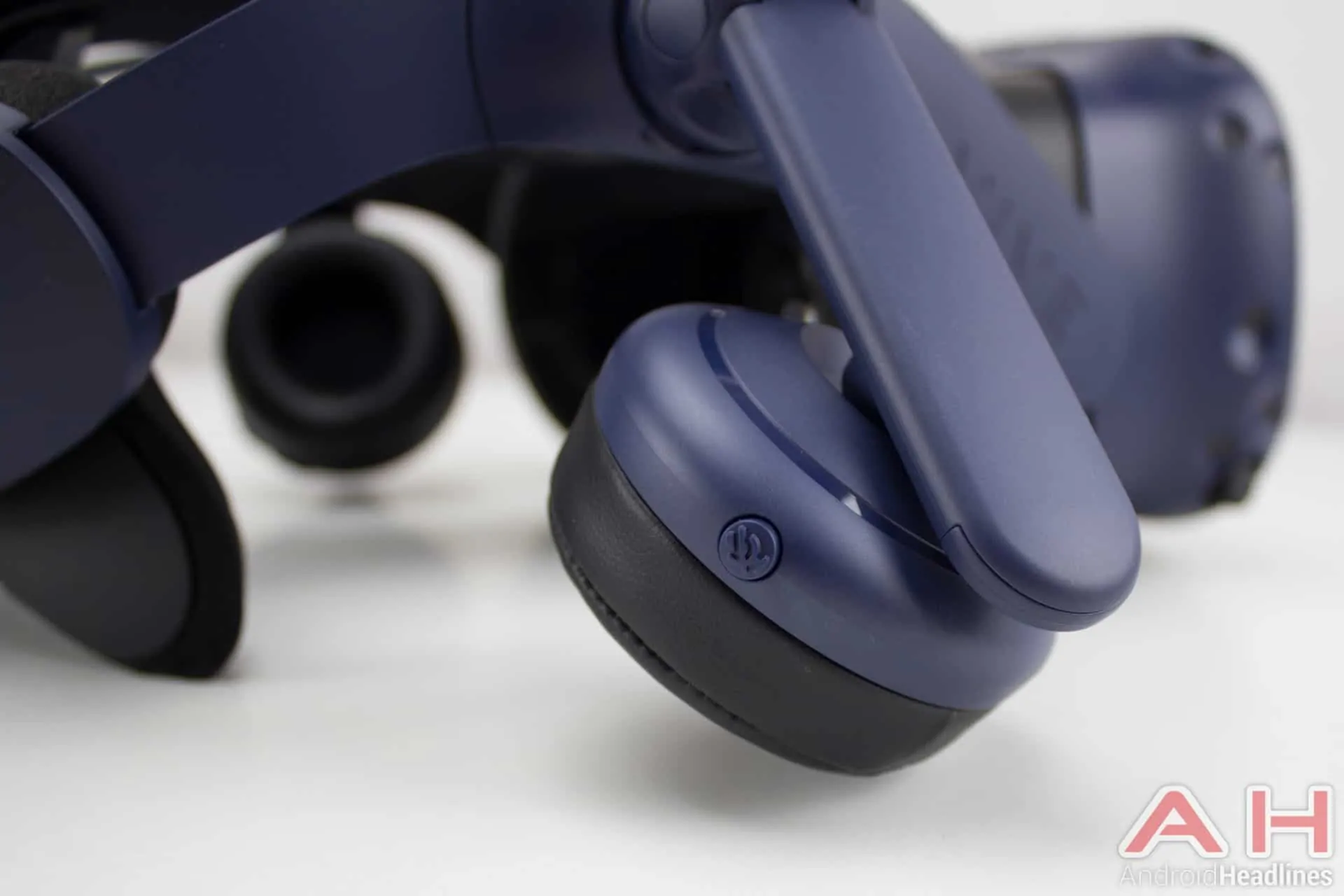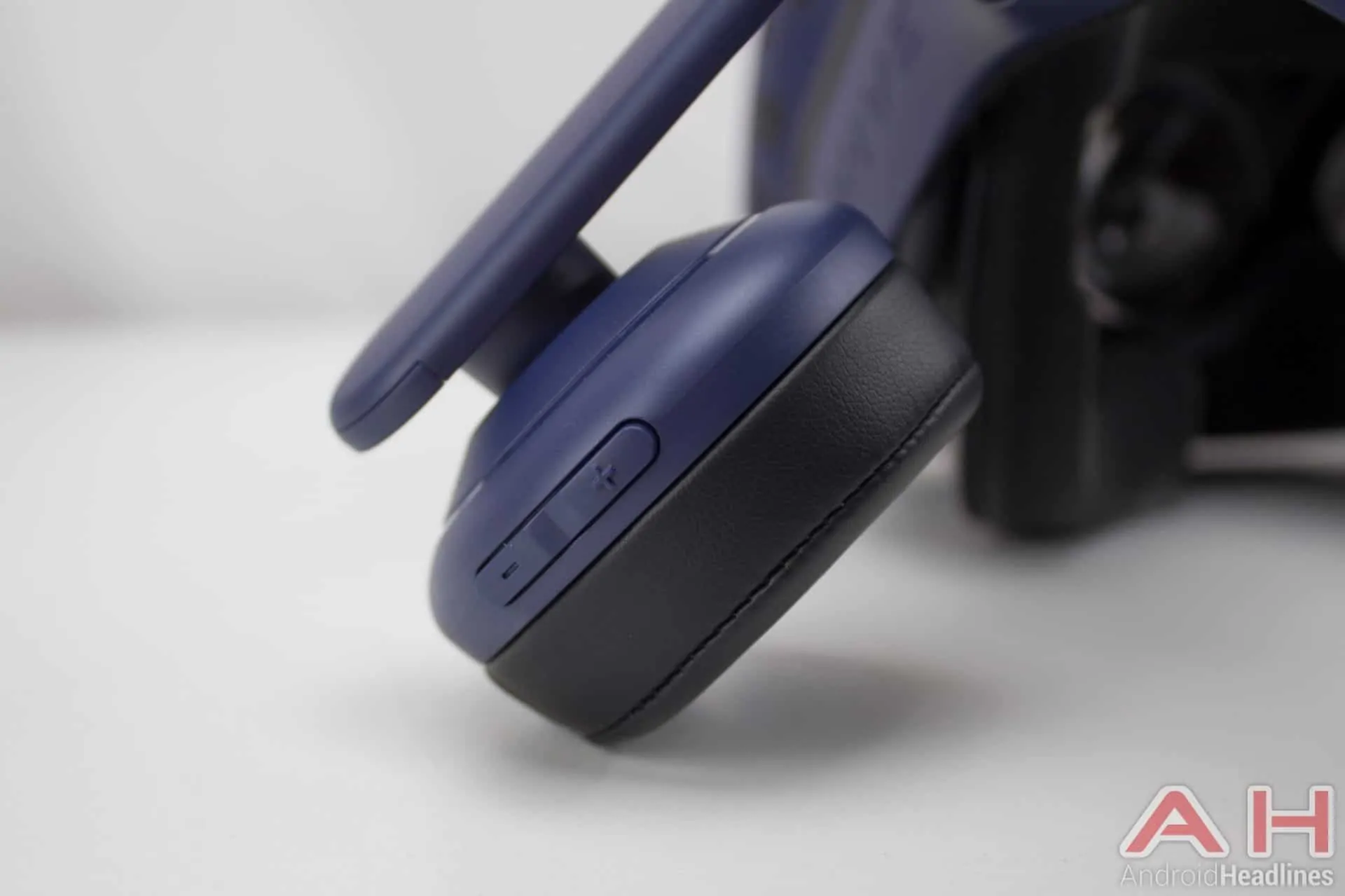The best VR experience, for a price.
It’s been two years now since HTC launched its revolutionary VR platform, the HTC Vive, and while we’ve seen various headset upgrades and accessories to enhance the experience, the Head-Mounted Display (HMD) has remained the same since launch. Now HTC is launching a new, upgraded HMD with higher resolution, better headphones, a significantly improved head strap design, and a lighter overall weight with dual cameras up front. Is this the ultimate VR solution? Let’s take a look.
Video Review
What’s In the Box

HTC Shipped us the HMD upgrade version of the Vive Pro, which is only intended to replace the original Vive HMD with similar capabilities, rather than switching it out with a full-fledged system repsanitationThis upgrade packaging comes with the headset with headset cable, new link box (different from the original link box), USB 3.0 cable (USB-A to USB-A),DisplayPort cable, link box power adapter, link box mounting pad, microfiber cleaning cloth, earphone hole caps, documentation, and an inter-pupillary distance (IPD) measurement paper. This upgrade bundle retails for $799.
HTC will also be shipping the Vive Pro in various packages, which will likely include version 2.0 lighthouses, new Vive controllers, or even the new wireless adapters. HTC hasn’t detailed all the available packages at this time of writing, but it will be selling a separate SteamVR 1.0 Tracking Bundle for $299, which includes 2 base stations and 2 controllers. This is available for folks who don’t currently have a Vive, but would like to jump into the best possible experience available and don’t have the space to fully take advantage of SteamVR Tracking 2.0’s expanded range capabilities.
Headset and Tracking

HTC has upgraded every single measure of its original Vive specs with the Vive Pro, a true upgrade in every sense of the word. It’s almost odd that HTC didn’t outright call this the Vive 2.0, as it’s launching the Vive Pro alongside SteamVR Tracking 2.0; a massive upgrade in tracking abilities. The original Vive still carries the title of best room scale accuracy and setup among available VR solutions, but the maximum room scale size is 5 x 5 meters for version 1.0. Version 2.0 doubles this size to 10m x 10m, which is significant especially for VR Arcades and other similar commercial applications.
Tracking is as accurate as ever, with sub-millimeter accuracy that, combined with the 90hz refresh rate of the display panels, feels every bit as real in the virtual world as it does in the real world. As a recap, the lighthouse base stations work by essentially projecting an infrared grid across the room, and give the headset and controllers the ability to track movements anywhere within the measured space. Base stations and controllers are all connected wirelessly via Bluetooth to the link box, which is connected to a PC.
This new tracking size will require the new wireless adapter to be used with the Vive Pro, as it still ships with a 15ft long cable for tethered use out of the box. This time around, however, HTC has significantly refined the cable, as it’s now a very small, single cable that’s less rigid and a softer casing around. At both ends is a single, proprietary connector, whereas the original Vive HMD featured HDMI, Power and USB connections at each end of the cable. The new Link Box utilizes DisplayPort instead of HDMI this time around, offering more bandwidth overall for the higher resolution panels at a high frame rate. This new single connector clicks into the link box too, offering a more modern feel to the connectors and providing some additional security in case the cord gets pulled. The new link box also features a power button on the front, while the original was always on.
This new single cable is much lighter and far easier to manage than the old one, and the new connection style’s advantages shouldn’t be downplayed. The cable loops nicely around the left earpiece and provides a simple, manageable way of dealing with the hassle that a constantly tethered cable can bring. The headset looks similar, but is much more streamlined in many ways. Along the front, you’ll find dual cameras instead of a single, centered one, something that’ll likely come into play later, but doesn’t appear to have any advantage right now. Dual microphones now offer a way to enable voice chatting with active noise cancellation, helping to remove screaming children and other background noises that so often irritate users online.
The new rigid plastic head straps are significantly stronger and easier to use than the cloth ones that shipped with the original Vive, and are less wobbly than the Deluxe Audio Strap for the original Vive too. Weight distribution is more even, with most of the weight now resting at the base of the skull rather than on cheekbones, and the headset rests at a slight upward angle on the face now thanks to the new headset design. This took me a little while to get used to, as the weight presses against the forehead now instead of cheekbones, and the sweet spot for the lenses seems to be lower as a result.
Along the front of the headset you’ll find various buttons and knobs for comfort adjustment of the display and lenses. A knob adjusts the distance between the lenses to match inter-pupillary distance (IPD), and a button along the bottom allows the headset to pull out a few centimeters to allow for glasses use without scratching the lenses. A power button resides on the left side and blends in with the new blue paint job, only easily found by the status LED next to it.
The earphone design has been refined since the launch of the Deluxe Audio Strap (DAS) for the original Vive, and now features the same rigid plastic construction as the rest of the headset. The headphones adjust vertically, and adjust further than the DAS to better fit a wider range of ears. Each earpiece will fold in or out to make it easier to put the headset on or remove it, and the click between the two states (in or out) is less pronounced than the DAS’s headphones. These can be removed if you prefer to use your own headphones, for whatever reason, and plugged up with two small blue caps for a nicer presentation.

The Vive Pro utilizes the same tracking system as the original Vive, which reads coordinates from two different base stations, which are placed at opposite ends of the room. These existing base stations are now known as SteamVR Tracking 1.0 base stations and offer a maximum range of 5m x 5m, and provide sub-millimeter accuracy for the Vive HMD and its controllers and optional trackers. The Vive Pro HMD upgrade kit doesn’t ship with any controllers or base stations for tracking, as detailed in the above section, as it is intended for current Vive owners who are looking for an HMD upgrade. HTC sells a $299 package with 2 base stations and two controllers for folks that need the full package.
New to the Vive Pro is the ability to work with SteamVR Tracking 2.0, which brings about new base stations that can be placed up to 10m x 10m apart, doubling the effective range from SteamVR Tracking 1.0. As the included cable will not reach this maximum length, SteamVR Tracking 2.0 is intended to be used with the wireless accessory add-on, and will likely later be sold alongside this wireless add-on, as well as a set of new controllers. It’s no secret that HTC has been working on a new “knuckle” controller design for some time, and we expect that to launch with SteamVR Tracking 2.0 capabilities as well. For now, though, we don’t have these to test, and cannot comment on their effectiveness.
Comfort and Longevity
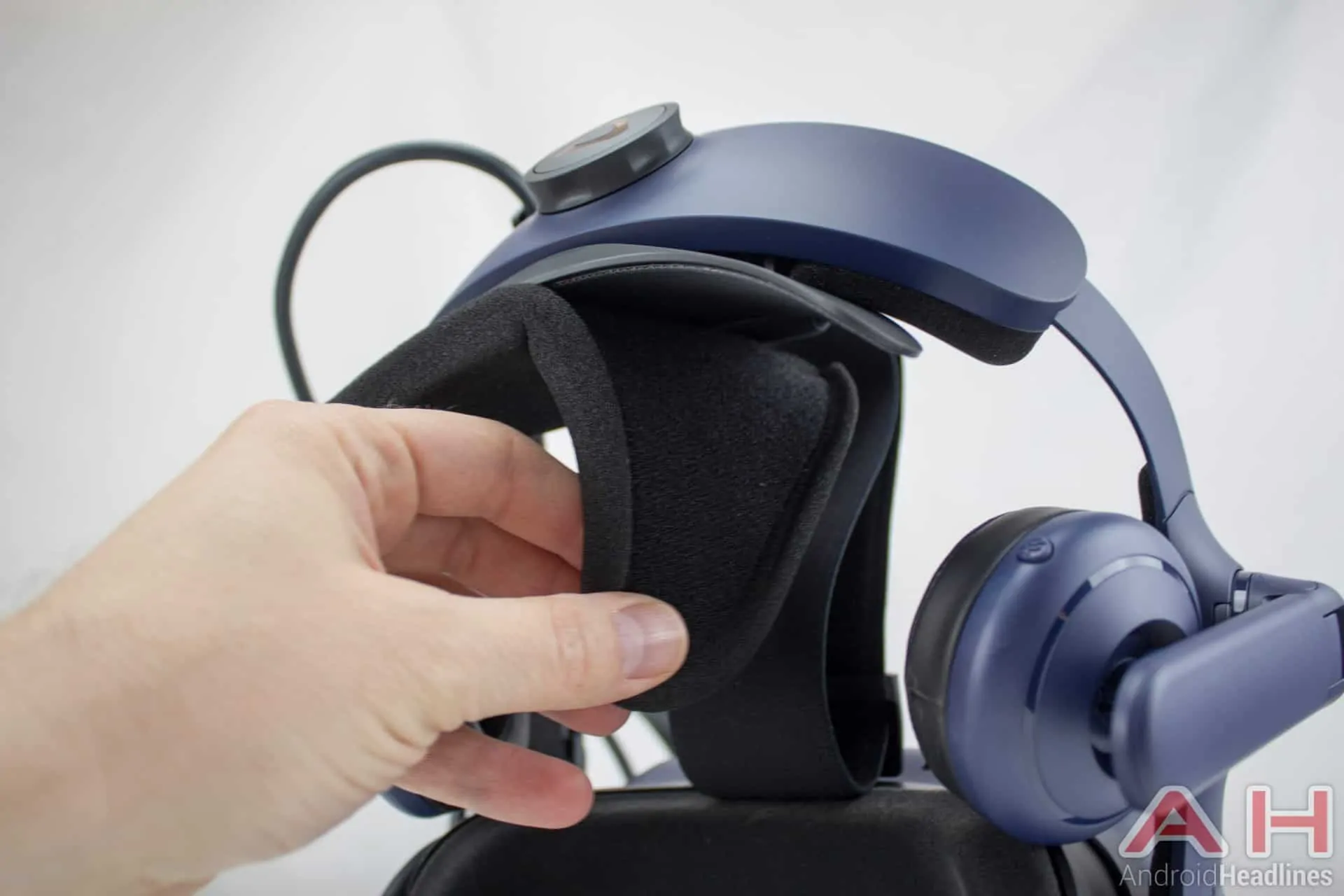
The headset itself is 15% lighter; 470 grams for the Vive Pro, compared with 555 grams for the original Vive. While 15% doesn’t sound massive, combining this with the significantly more ergonomic headset means this is easily the most comfortable headset on the market. HTC has come a long way with its comfort designs, evidenced by the launch of the Vive Deluxe Audio Strap last year, and this improves upon even that design in several ways. Along the back you’ll find the adjustment wheel, which extends or retracts the headset length to fit almost any size head. There’s still a single velcro cloth strap along the top for adding additional comfort and support to the headset, which also helps bring the padding lower along the back of the head.
This new padding is luxurious by any standard, and not only features several layers of padding for support and even weight distribution, but all pads are also removable and can be dried and sanitized after use. There’s no doubting the amount of sweat that can collect in these pads, so it’s nice to see HTC continually designing it with sanitization in mind. Pads are found on the left and right sides of the head too, keeping temples from being pressed too hard, and resting just above the ears. The new back padding cradles the base of the skull in ways the original simply didn’t, and the design makes it sit lower on the face as well, keeping more weight off cheeks and pushing it to the back of the head instead.
As a result of these design improvements, it’s easier than ever to stay in VR space for long periods of time. Since the HMD’s weight is lifted off the cheeks and resting more on the forehead and back of the head this time around, you won’t get the same fatigue that’s possible with the original Vive’s cloth strap design. The rigid plastic headset also holds the headset in place better than the stretchy cloth that shipped with the original, and it’s less likely you’ll see the headset shift when moving around quickly in VR. The rubber nose guards have also been redesigned and are not only more comfortable than before, but also keep less light from entering the HMD, further immersing you in the VR world. There’s still a small gap at the side of the nose when wearing it, which is generally fine and can be used to view things outside of the HMD if necessary.
Display, Lenses, and Sound

The new display panels are likely the biggest upgrade for the Vive Pro, as they represent a 78% increase in resolution over the original Vive HMD. At 2880 x 1600 resolution (615 pixels-per-inch), these new OLED panels represent a 167 PPI density increase over the original 448PPI (2160 x 1200) panels of the original Vive. AT 3.5-inches and just a few centimeters from the user’s face, it’s incredibly important to have a high pixel density to keep the user immersed. Because of the higher pixel density, it’s now possible to read fine text, see details in the distance, and just get an overall better sense of being in the virtual world.
Despite the huge jump in resolution for the screen, some titles won’t automatically look better in the Vive Pro versus the original Vive. This is because SteamVR will now automatically scale resolution depending on performance metrics, attempting to keep that 90FPS frame rate instead of switching to the 45FPS asynchronous timewarp (ATW) methodology. While this obviously reduces the overall frame rate and makes things fuzzy, it has the added advantage of reducing the stuttering and odd frame rate timing that so often happens when games have to utilize the interpolated frames from ATW.
On the downside, this also means that users who don’t manually override the resolution in settings will not see the maximum resolution, and therefore not get the best effect of the Vive Pro, if their hardware is not up to snuff. Running a GeForce GTX 970, for instance, will not provide enough horsepower to run beyond the original Vive’s resolution at any kind of acceptable frame rate, whereas a GTX 1070 will be able to provide enough horsepower for this task in many games, but not all. SteamVR can now also change this resolution per-app/game, and can be saved as a manual override in place of the automated one if you choose. This isn’t exclusive to the Vive Pro though, it’s a universal SteamVR feature for any VR headset, but it is particularly applicable here because of the big resolution jump over most other HMDs out there.
Jump in resolution means a significant reduction in the so-called screen door effect, or the ability to see pixels on an individual basis instead of the bigger picture they are intended to create. While pixel structure is still visible if you look very hard, it’s almost unnoticeable while actually playing a game, which is especially important when trying to read text or see distance detail. The lenses aren’t improved at all and still feature the same fresnel lenses as the original Vive. This cuts down on edge distortion but introduces “God rays,” as they’re affectionately known, which means if you don’t align the lens’s sweet spot with the middle of your retina, you’ll see strange lines of light and odd distortions throughout the image. Because of the way the headset sits on the face now, the sweet spot is slightly lower than on the original Vive and needs to sit slightly higher on the cheeks.
Dual microphones on the headset include built-in noise canceling for audio input and output. For folks on the other side of the Internet from you, this means the sounds of your children screaming or the loud music playing won’t be as noticeable, and on your end, these sounds won’t interrupt the sweet sounds coming from virtual space through the headphones. HTC supports 3D spatial audio through these headphones, and while any headphone can be used to replicate 3D audio to an extent, the drivers used in these headphones are clean, clear and powerful. The dedicated pre-amp delivers ample power to each speaker and provides crackle-free, loud sound with a wide range of reproduction and good bass too. If you so choose, these can be removed from the headset, and small blue plugs put in their place to keep the HMD aesthetically pleasing.
SteamVR and Viveport

While the original Vive launch was done 100% through the Steam store, HTC has since launched Viveport, a Vive-exclusive subscription service that offers users the ability to choose 5 titles each month from the nearly 500 currently available. Viveport is built specifically with the Vive and its capabilities in mind, housing games and developers that showcase the technology and capabilities HTC has built into the Vive and its controllers. Viveport is also designed as a portal to find content that’s not buried in Steam’s overwhelmingly massive library of titles, many of which are often difficult to pinpoint because of the sheer volume of titles available.
There aren’t nearly as many exclusive titles available for the Vive as there are for the Oculus Rift, but HTC’s hopes are that the cheap subscription service will help make it the more palatable service in the end. Steam sales are legendary too, of course, but those titles are typically made to work with the Oculus Rift, and sometimes other headsets as well too. SteamVR is also a bit more finicky than Oculus Home as well, and often requires a bit of patience and troubleshooting to resolve issues that crop up out of nowhere. This, combined with the general frustration of working on the Windows platform for gaming, can be an irritating mix of tech support and troubleshooting more often than you might like.
During the review period, for instance, I ran into error 108, where SteamVR couldn’t find the headset, despite the fact that I’d been using it for hours before receiving the error. Turns out a driver from my Razer mouse somehow was attached to the USB driver that the Vive needs to use. Removing this rogue driver and replacing it with the correct one fixed the issue, but one wonders how in the world such a thing could happen anyway. I’ve run into a number of weird issues like this in my many years of PC gaming, but having so many additional peripherals, drivers and equipment in the world of VR only exacerbates the possible problems.
The Good
Unbelievable resolution bump
The best-quality display in the industry
Super comfortable, lighter, ergonomic design
Easy to adjust and fits a wider range of head sizes
Easier to use for long periods of time
Noise-canceling mics built-in
Excellent audio output via built-in headphones
Better cable and connector
The best room-scale tracking gets even better
The Bad
Expensive
Still not wireless without an add-on
SteamVR can be very temperamental
Final Thoughts

While not a direct negative aspect of the Vive Pro itself, the resolution and frame rate requirements ultimately mean that most people are not going to be able to take full advantage of the benefits the Vive Pro brings to the table, namely the resolution. This, coupled with the significantly higher cost of the HMD itself, means that most people are better off getting the standard HTC Vive than the Vive Pro, especially considering the cost of needing additional accessories and the lot.
HTC is gearing the Vive Pro toward enterprise and the “most demanding VR users,” and as such, this is ultimately a niche product at this point in time. What it shows, however, is that more comfortable headsets and a resolution bump are two of the most important pieces toward the puzzle of making VR a lasting experience. The entry price barrier is still going to be a big hang-up for most people, especially since $799 is just the HMD, and does not include new controllers or even a wireless accessory. This is the best experience you’re going to have in VR, if you’ve got the hardware for it of course, but it’s going to be for a price.

